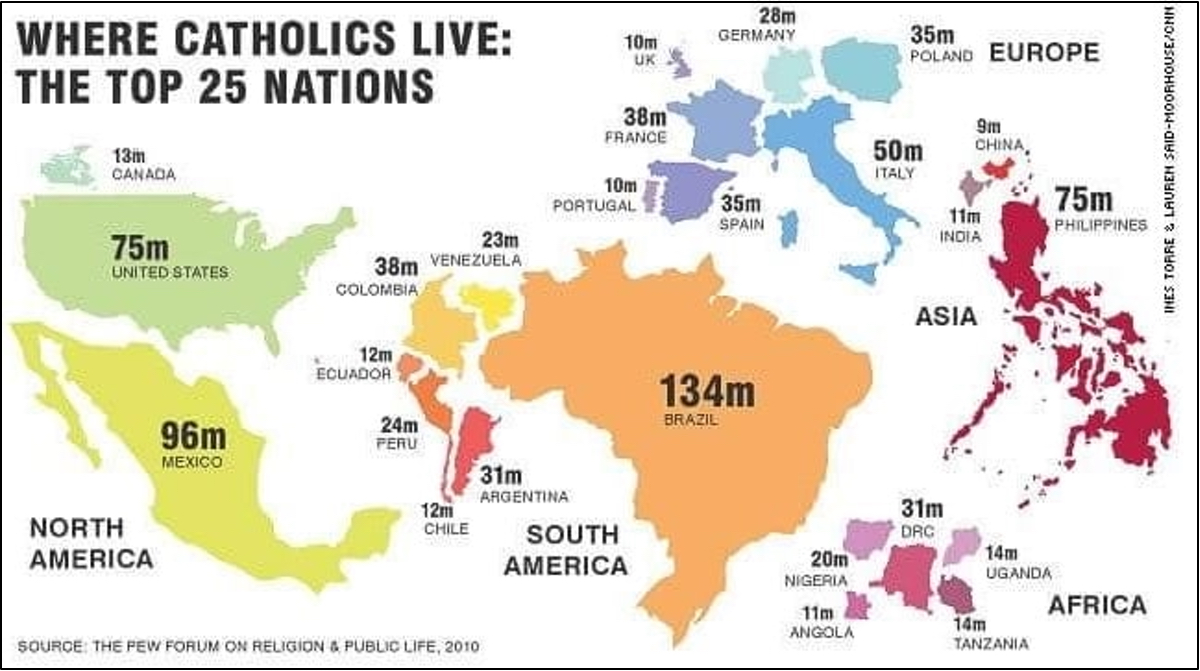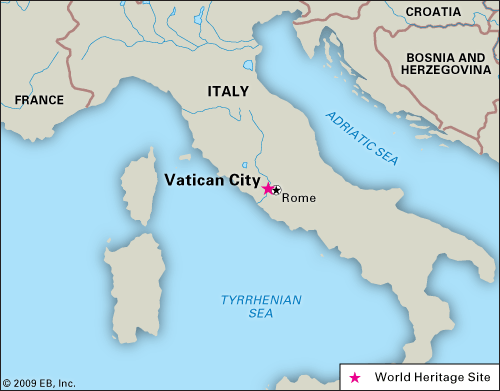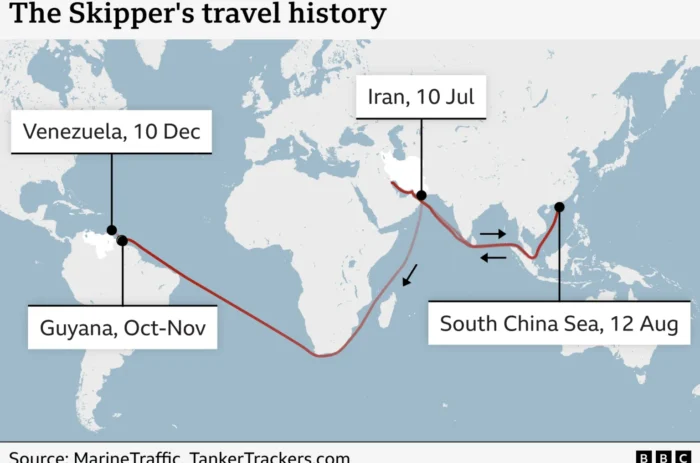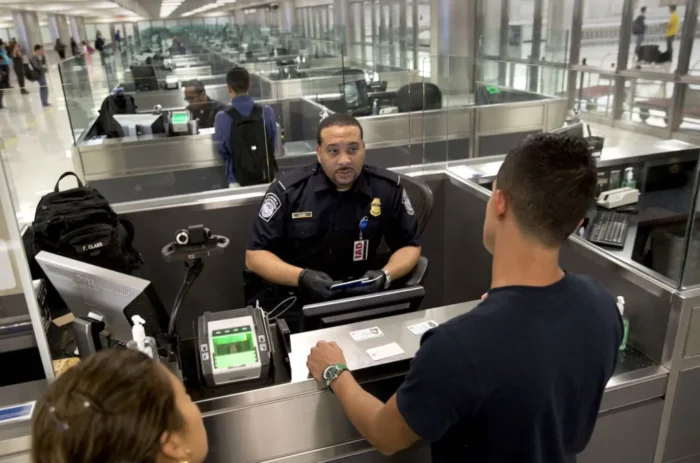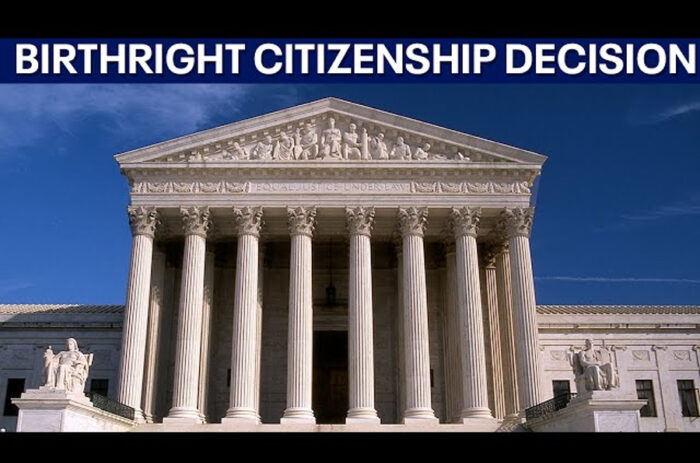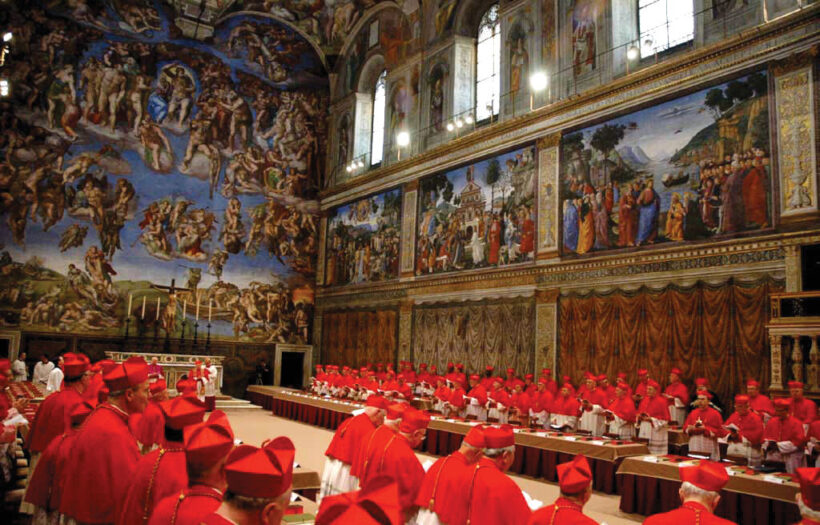
Cardinals pray before the beginning of the conclave in which Cardinal Joseph Ratzinger was elected as Pope
redo Jump to...
print Print...
NOTES:
- A cardinal is a senior member of the clergy of the Catholic Church. Cardinals serve as advisors to the pope, who is the bishop of Rome.
- Cardinals are chosen and formally created by the pope, and typically hold the title for life.
- Collectively, they constitute the College of Cardinals.
- The most solemn responsibility of the cardinals is to elect a new pope in a conclave, almost always from among themselves (with a few historical exceptions).
A papal conclave is a gathering of the College of Cardinals convened to elect a bishop of Rome, also known as the pope. Catholics consider the pope to be the apostolic successor of Saint Peter* and the earthly head of the Catholic Church.
*Peter was one of the Twelve Apostles of Jesus and one of the first leaders of the early Christian Church. Catholic and Orthodox tradition treats Peter as the first bishop of Rome – or pope.
(by Peter Pinedo and Pilar Arias, Fox News) – After a pope dies, the Catholic Church chooses its next leader through an ancient electoral process called the “papal conclave.”
In practice, since at least 1276, the conclave gathers the church’s top bishops – called the College of Cardinals – from around the globe. Though there are more than 240 cardinals currently, only those under the age of 80 are eligible to vote in the conclave and the number of cardinal electors is limited to 120.
Nearly all prefects* of Vatican offices lose their jobs when a pope dies, but a few stay on, including the foreign minister and the master of liturgical ceremonies, who play a key role in assembling the conclave. [*Prefects are the leaders of Vatican departments, responsible for carrying out the Pope’s directives and overseeing specific areas of church governance. ]
The conclave takes place in the Vatican’s Sistine Chapel and cardinals are kept in strict isolation to keep them far from any outside influence from the rest of the world. This isolation is so important in the process that even the name conclave comes from the Latin “con clavis,” which means “with key,” indicating how the cardinal electors are locked up while they deliberate over who will be the new pope.
There is also an emphasis on choosing a pope quickly to lessen the amount of time the church spends without a leader. The cardinals cast their first vote the day the conclave begins. They then cast votes at least twice every day after – in the morning and evening – until a pope is selected.
The common practice in the modern Catholic Church is for the cardinals to choose a pope from among their own ranks, though this was not always the case.
Conclaves will typically begin with a special Mass celebrated in St. Peter’s Basilica, in which the cardinals invoke the Holy Spirit for guidance.
Cardinals vote for the pope through a secret ballot. At each vote, a cardinal will write his choice on a piece of paper, process (move forward in an orderly fashion) up to Michaelangelo’s giant fresco of the last judgment – which serves as a reminder of the gravity and sacredness of their responsibility – and drop his ballot in a chalice.
A two-thirds majority of votes is needed to select a new pope. More than two-thirds of the eligible cardinal electors were appointed by Pope Francis. However, these cardinals hold a diverse set of viewpoints and come from all different parts of the world.
After each vote, the ballots are burned and the ashes are used to send a signal to the rest of the world about whether a decision has been made. Black smoke rising from the Sistine Chapel means there has not been a consensus, while white smoke means a pope has been chosen.
Once a cardinal receives a two-thirds majority of the votes, the dean of the College of Cardinals asks him if he is willing to accept the position. If he accepts, he must then choose his papal name. Cardinal Jose Mario Bergoglio chose the name “Pope Francis,” becoming the first pope to choose this name.
After the world is alerted through the burning of white smoke, the new pope is announced with the most senior cardinal proclaiming “Habemus papam!” – “We have a pope” – after which the newly elected pontiff processes out and imparts his first blessing to the city of Rome and the rest of the world.
Published at Fox News on April 21. Reprinted here for educational purposes only. May not be reproduced on other websites without permission.
See a map and a list of Catholics by country at worldpopulationreview.com.
Questions
1. a) What is the population of the world?
b) What percent of the world’s population is Catholic?
c) What are the world’s 4 largest religions and their numbers?
2. What is a papal conclave?
3. a) How many cardinals are currently in the Catholic church?
b) Why don’t all cardinals have a vote in the election of a new pope?
4. a) Where is the conclave held?
b) Why are the cardinals kept in isolation during the conclave?
c) How many votes does it take for one of the cardinals to be elected as the new pope?
5. How does a papal conclave begin?
6. How do the cardinals in the conclave announce to the world the results of each vote?
7. What happens after the cardinals elect a pope?
Background
A papal conclave will be held in Rome in the coming weeks; it must begin no earlier than 16 days after the pope’s passing, and no later than 21. Therefore, the earliest the conclave could start is May 6, 2025; the latest is May 12, 2025.
At the conclave, cardinals under the age of 80 are eligible to vote, and a two-thirds majority is needed to win. … [As of Jan. 22, the world has 252 cardinals, of which 138 fit the age requirement. It’s not clear how the 120 are chosen. Those over the age of 80 can participate in preliminary meetings.]
The longest papal conclave lasted three years—it took place following the death of Pope Clement VI, and went from November 1268 to September 1271 (33 months), until Pope Gregory X was finally elected.
The shortest conclaves all took place before 1274, when sometimes, a new pope was elected the same day the previous pope died. But in 1274, the Church decreed that they had to wait at least ten days before the first vote (in 2025, it’s now 16 days). Post-1274, the shortest conclave is the 1503 election of Pope Julius II, elected in under ten hours.
In modern days, conclaves typically last under a few days; Pope Francis was elected after just five rounds in under two days.
If no one is elected after three days, voting pauses for up to one day. After seven more rounds, there’s another pause, before voting resumes. Per CBC, “If no one is selected after 33 rounds, the cardinals go to a runoff of the top two contenders, under a relatively new rule introduced by Pope Benedict XVI [who was pope from 2005 until he resigned/retired in 2013 – the last pope to resign before him was Gregory XII in 1415). Unlike in previous rounds, those two candidates cannot cast ballots.” (excerpted from an article at Town&Country by Emily Burack)
Vatican City, a city-state surrounded by Rome, Italy, is the headquarters of the Roman Catholic Church. It’s home to the Pope and a trove of iconic art and architecture.
Its importance stems from being the center of Catholicism, a significant cultural and spiritual hub, and a major pilgrimage site.
The Vatican is the heart of the Roman Catholic Church, with St. Peter’s Basilica, built over the tomb of St. Peter, being a major pilgrimage site.
Its Vatican Museums house ancient Roman sculptures such as the famed “Laocoön and His Sons” as well as Renaissance frescoes in the Raphael Rooms and the Sistine Chapel, famous for Michelangelo’s ceiling.
Resources
Watch an April 21, 2025 report, LiveNOW from FOX:
Watch an April 22, 2025 report from NBC6, South Florida:
Daily “Answers” emails are provided for Daily News Articles, Tuesday’s World Events and Friday’s News Quiz.
